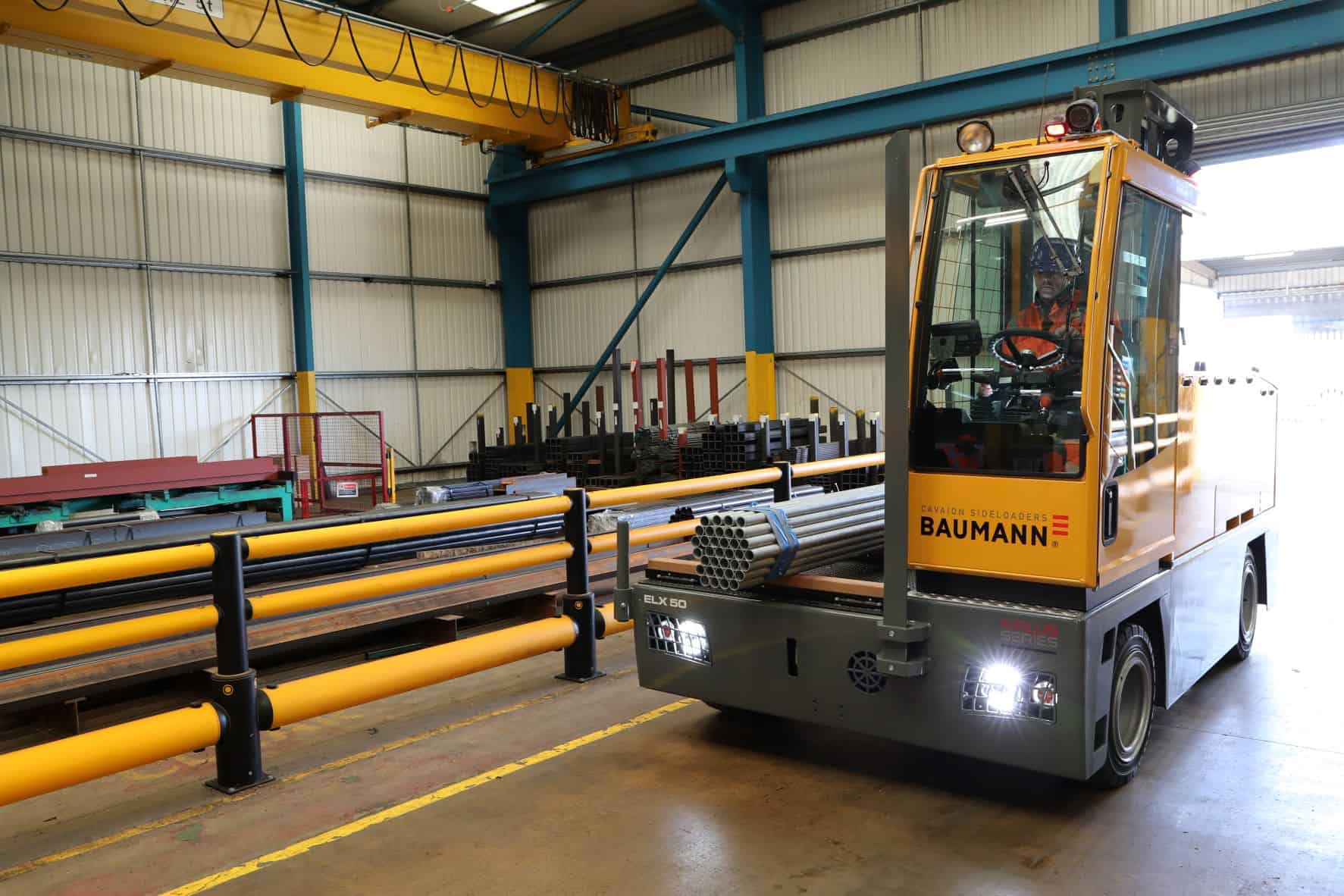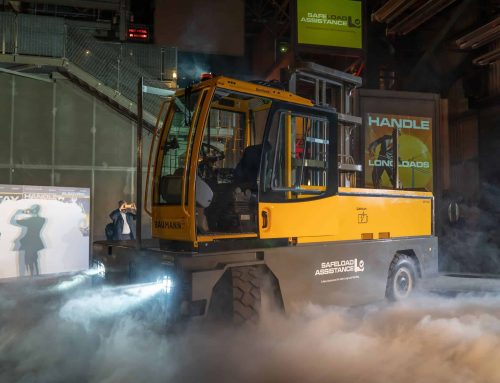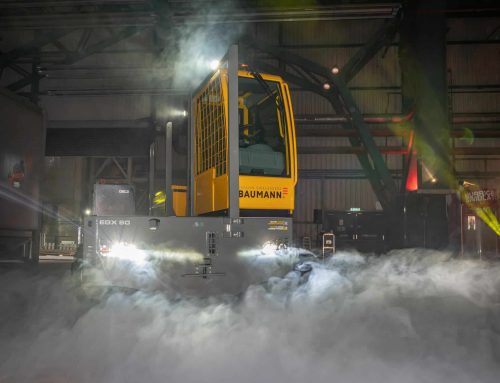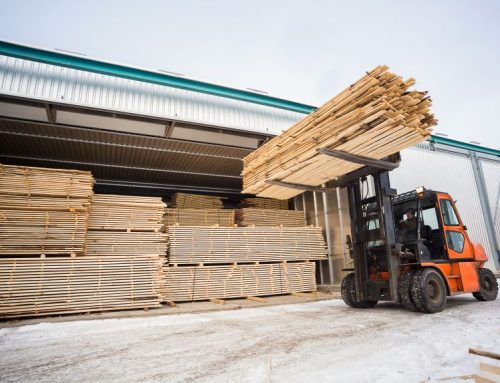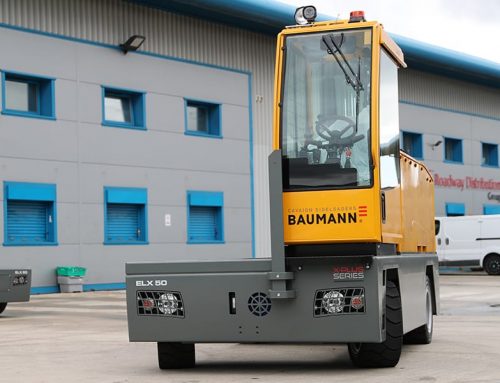Mast and door interlocks are providing increasingly high levels of safety for Baumann sideloader users.
All forklift users should know moving with the load raised is generally unsafe and should be avoided.
No matter how light the load, carrying it in the air is ill-advised. As a manufacturer of materials handling equipment, Baumann never advises customers to move the truck with the load raised. It’s a basic safety concern for all in the sector, but despite the advice, it’s very common.
When it comes to sideloaders, forks are for lifting and lowering, the bed is for transporting.
In forklift design, the tipping truck is a fairly well-known phenomenon. With loads raised, forklifts are incredibly vulnerable to tipping, influenced by a central axle mounting at the rear and the resulting stability triangle.
Sideloaders have a different centre of gravity with the counterweight built into the chassis behind the operator cabin along the side of the deck so you don’t need to move with the load raised.
As a result, the risks of travelling in the same way are not necessarily tipping the sideloader. It is of course possible, but a rare occurrence.
This is why sideloaders are a popular choice for timber and steel yards.
In forklifts, load moving is a big risk. The point of contact of a load on the forks is tiny in comparison to the contact and weight distribution when on the bed.
The same is the case for loads on support legs of a multi-directional machine. Falling loads are a danger to operators, equipment and pedestrians.
How Does A Sideloader Make Moving Loads Safe?
When a long load is on the sideloader bed, it is not only more secure, it is also possible to see where the load ends.
Baumann offers on all models a mast interlock option which restricts drive unless the forks are positioned slightly lower than bed height, or if the mast is not correctly retracted (driving with the forks outside the chassis footprint can be equally dangerous). Inching is still allowed for small adjustments and safety reasons, but truck movement is set at a highly reduced speed.
What’s more, the option can be retrofitted on all trucks.
Incidentally, the same technology is also possible on the (much more vulnerable) counterbalance forklift, using a magnetic latch switch linked to the drive signal, but if it is ever fitted, it’s very rare.
Linked to the relay for the drive circuit, the Baumann sideloader mast interlock can also be set to prevent travel with the mast over a certain height, something common for operations with low doors or roof obstructions, or with the cab door open.
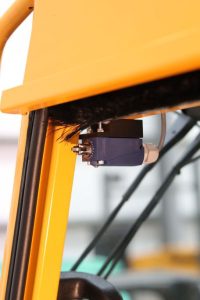 From door safety interlocks, hi-visibility seatbelts and interlocks, fleet management systems with RFID, to reversing sensors and audible alarms, speed limiters, pedestrian awareness cameras, blue spotlights and safety zone lights – all are features that are readily available and commonly fitted to Baumann sideloaders.
From door safety interlocks, hi-visibility seatbelts and interlocks, fleet management systems with RFID, to reversing sensors and audible alarms, speed limiters, pedestrian awareness cameras, blue spotlights and safety zone lights – all are features that are readily available and commonly fitted to Baumann sideloaders.
The consequences of an accident can be painful, perhaps devastating to those involved, but the business too can also suffer as a result.
Initially, there is the business disruption. This may come in the form of unavailable machines, or the time and energy required to carry out a formal review.
There’s also the cost to the business, in human and financial terms. Being on the hook for major repairs can be expensive, waiting times for components – post-Covid and Russia’s invasion of Ukraine – can be very long, and an accident may have a knock-on effect for other pieces of equipment that have to fill in the gaps.
Naturally, certain operators can be resistant to measures that slow them down in order to increase their safety. For the sake of those small gains in the speed of operation, the risks are never worth it.
Some may argue that moving with the load raised is done to allow the operator to see underneath it.
This may be true, but why is it necessary? Beyond precise inching manoeuvres, seeing under the load should only be necessary when lifting and lowering, not whilst turning or travelling forwards. Cameras are also available if the loads restrict the view, as are pedestrian awareness cameras to highlight and alert the presence of anyone nearby
Habit and lack of awareness are probably the main reasons why this driving behaviour persists.
Ultimately, the responsibility lies with the customer to train operators to work in a safe manner, and it is then incumbent upon the operator to put that training into practice. Load security, productivity and safety are some of the sideloader’s best features, and it would be a shame, and potentially criminal, to ignore them.
